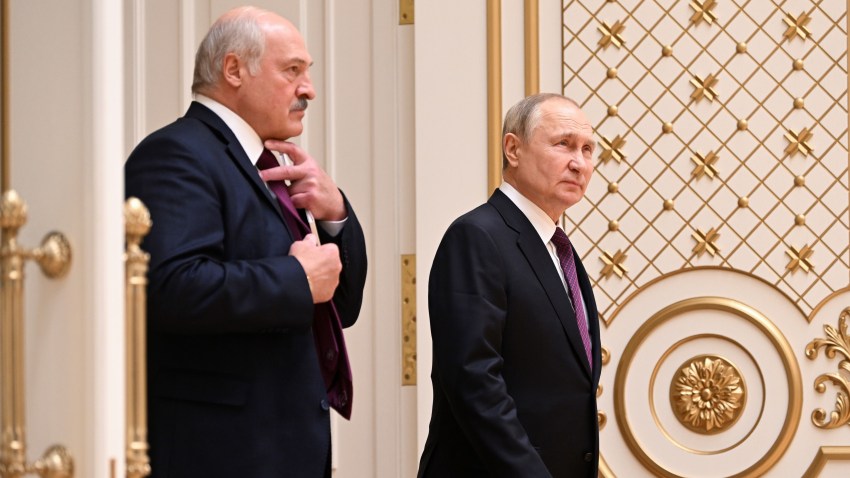Russian President Vladimir Putin visited Belarus this week for the first time since June 2019. The last time he was in Minsk, the capital, Belarus was a completely different country. Soon after Putin’s visit, the authoritarian leader of Belarus, Alexander Lukashenko, negotiated several lucrative investment projects between Austria and Belarus during a trip to Vienna. The following year he hosted then-U.S. Secretary of State Mike Pompeo in Minsk and requested deliveries of U.S. oil in order to reduce Belarus’ dependence on Russian energy resources.
That era of normal dealings with the West in an effort to balance Minsk’s ties with Moscow is now over. Today’s Belarus bears little resemblance to an independent state. Instead, it is a “quasi-state” of disputed political and military control. Russian tanks drive imposingly along the streets of Belarusian cities, and Russian generals manage Belarusian military airfields. As for Lukashenko, until welcoming Putin to Minsk this week, he has hosted mostly Russian governors, not leaders of foreign states.
One cause of the radical change is the geopolitical shock that hit Belarus back in 2020. In the presidential election that year, Lukashenko suffered a devastating loss to Sviatlana Tsikhanouskaya, the wife of a prominent opposition candidate who had been detained prior to the election. Instead of accepting his defeat, Lukashenko unleashed his security forces to brutally repress peaceful protesters, plunging Belarus into the abyss of political violence. Thousands of political prisoners were subjected to daily torture in Belarusian prisons; tens of thousands of dissidents, including Tsikhanouskaya, fled to neighboring countries to escape the crackdown.

